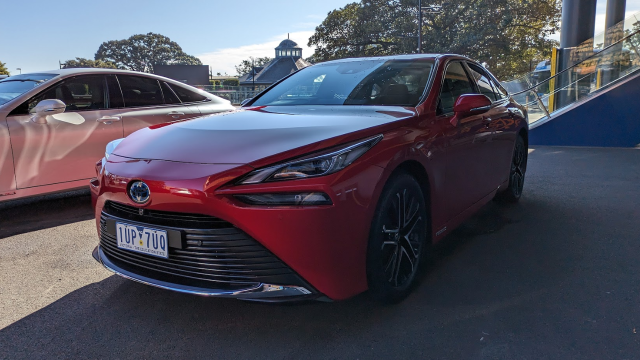Toyota’s yet to release its first electric car in Australia. While we know what car that’s going to be, the BZ4X, an SUV built in collaboration with Subaru (which is releasing its own version of the EV called the Solterra), Toyota has been noticeably slow to the game when it comes to electrification and moving on from petrol and diesel. That’s where the Toyota Mirai hydrogen car comes in – a car that I’ve just had the pleasure of driving.
The Toyota Mirai is a hydrogen car, and as of 2021, has been revised once since its introduction in 2014. It’s fuelled by hydrogen at a high pressure of 700 bar, and as the car drives, that hydrogen is converted into electricity, which powers the car. It’s effectively an electric vehicle with hydrogen as the energy storage solution, however, the benefit of a hydrogen car is that it’s much quicker to refuel while able to achieve a longer range (taking about two minutes), at least according to Toyota.
Toyota argues that the Mirai can reach up to 650km on a full tank, which is far greater than what you can expect from most electric vehicles, which typically range between 400km and 500km.
And this is all well and good, but as a car, how is it? Well, I took the Mirai for a spin around Sydney’s Randwick racecourse to see how it goes. Here’s what I think.
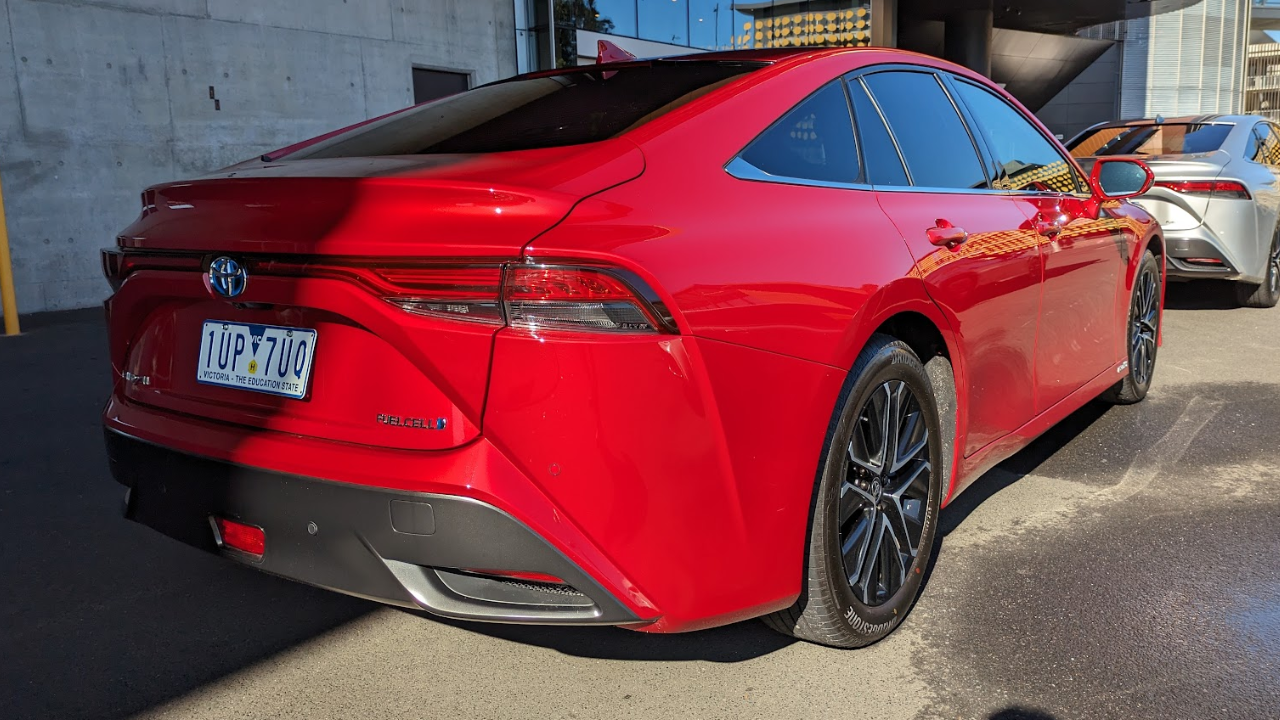
Hydropower
Firstly, the car is about the size of a Toyota Camry inside and out. It lacks the futurist flare of the Polestar 2 or the Tesla Model 3, and instead sticks to feeling like a familiar car. This is great for if you like physical buttons, but might not be all that appealing to some drivers.
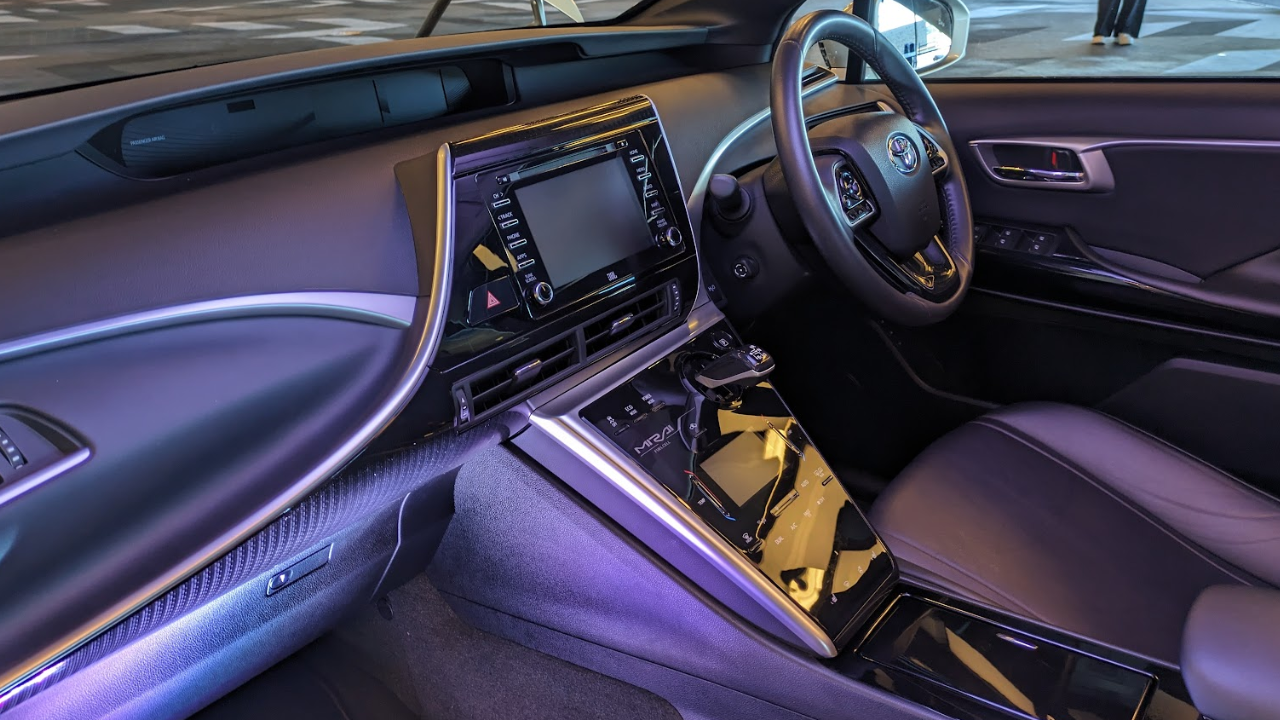
The car handled just as well as any EV I’ve ever driven, with a similar lack of sound compared to a combustion engine vehicle. It made a very gentle hum like some electric models, and visibility was terrific in the driver’s seat.
Overall, the Toyota Mirai sets out to achieve its goals – an environmentally conscious car that feels great to drive without going too hard on futurism.
Possibly the thing of greatest note when discussing impressions of the Toyota Mirai is the H2O ejection button. While drivers may mistake this button for the engine start and stop, this button actually expels excess water from the car on command (water is the byproduct of the Hydrogen when converted into electricity). This is useful for if you don’t want standing water in a particular place, such as in your garage or carport. TLDR: press the button to make the car pee.
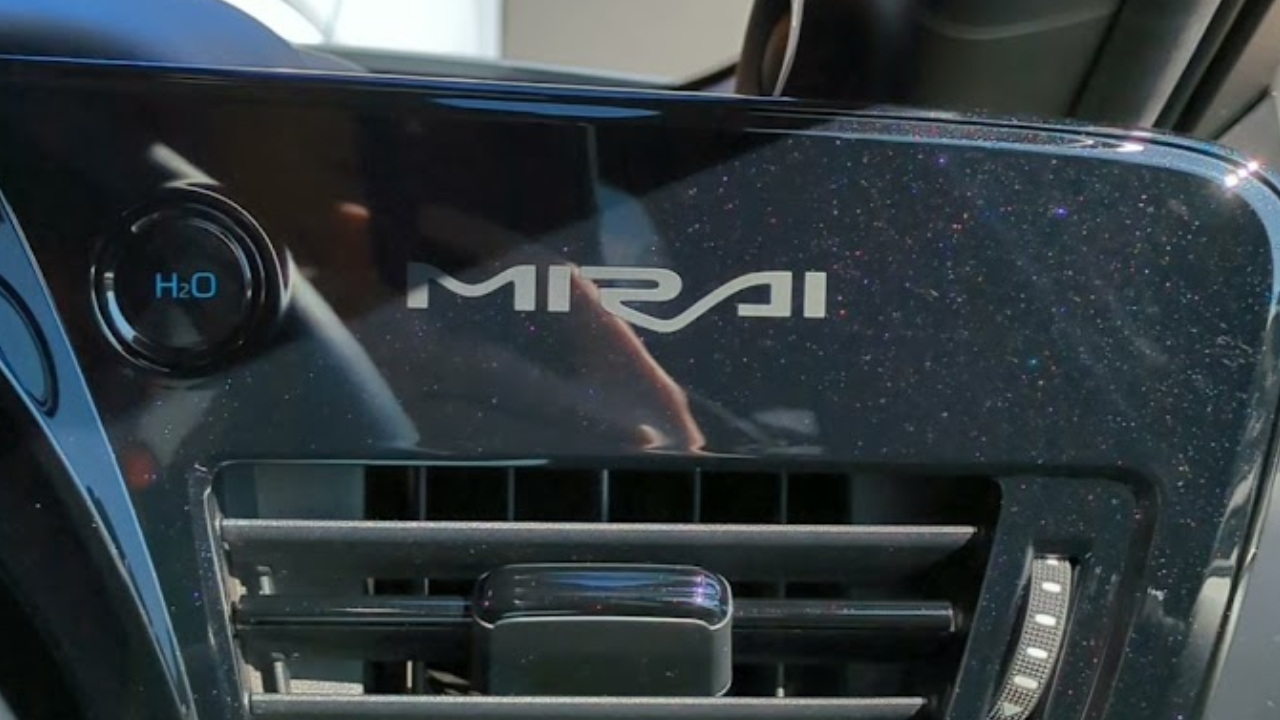
And… Honestly, that’s it. The most warming thing about the Mirai is how familiar it is. It’s not a particularly futurist-looking thing inside, but to me that’s fine – not everything needs to look like sci-fi set dressing.
The driving feeling is most similar to an EV: quiet, responsive, quick, and gearless. Just go and stop, really. It’s also good that the Mirai uses the same hydrogen refuelling plug standard as Hyundai, meaning that in an ideal world, they could use the same refuelling stations.
However, the Mirai does not exist in a vacuum and is part of a much larger conversation, and we need to talk about it.
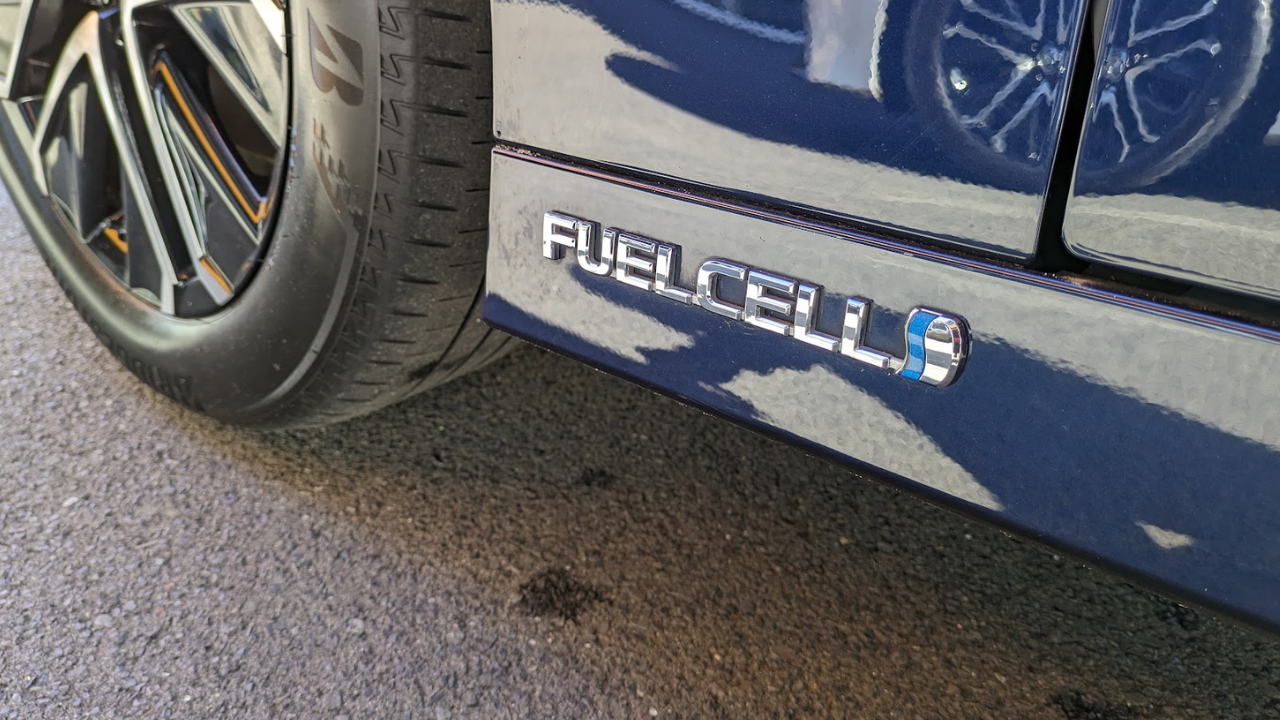
Will we actually see hydrogen cars on the road?
As you’ve likely heard, the Australian government is currently weighing up fuel efficiency standards, which are mandates on the levels of CO2 that a vehicle can produce on our roads. We’re one of the only countries that don’t have them, which is a leading reason why electric vehicles don’t make their way to Australia quickly – we’re just not a priority market.
Toyota, which is yet to release its first electric vehicle or PHEV in Australia, has been considered at odds with the plan for fuel efficiency standards. In early May, as reported by AAP, Toyota Australia’s executive said it was too early for electric vehicles to replace Australia’s cars. In September 2022, Greenpeace ranked Toyota dead last among automakers on electrification. While the company doesn’t seem to be completely against electric vehicles, it wants to see other options continue to exist for specific uses (such as heavy towing or travelling extreme distances).
And that’s the kind of thing Toyota wants to encourage with hydrogen – a similarly environmentally conscious energy type that doesn’t burn CO2 on the road. The problem is that hydrogen refuelling stations are nowhere near as rolled out as EV charging stations, making the adoption of hydrogen cars in Australia extremely premature. But Toyota is expecting this to change.
“What we’ve been seeing in the governments in recent times is that, at the federal government level, last week, announced $2 billion of funding towards green hydrogen. So a lot of that is about developing hydrogen for export and other applications, but transport will be a very good beneficiary of that,” Toyota Australia’s carbon policy manager Andrew Willis told Gizmodo Australia.
“When they get the scale of the hydrogen, that will definitely help.”
I asked Willis what he thought might be the catalyst event for hydrogen – an event that, potentially, encourages the construction of large networks across the country and for stakeholders to start caring more about hydrogen vehicles. Willis believes it could very well be the Hydrogen Highway project. The project, currently in development, will see hydrogen refuelling stations being deployed along the Hume highway in Victoria and NSW, along with a hydrogen refuelling network across Queensland.
“[These projects] will be a centrepiece that will actually drive a lot more interest and understanding of [hydrogen vehicles],” Willis added, noting that projects like this will likely give people confidence when buying a hydrogen car.
Toyota has no plans to build out hydrogen networks similar to Tesla’s EV charging station network. It’s a car company and, just like Mitsubishi, refuelling is not its business.
But at the same time, Toyota’s trying to argue that Hydrogen vehicles are going to satisfy a potential market that isn’t attracted to electric vehicles. Hydrogen vehicles refuel quicker and can supposedly reach greater ranges (I was unable to test this as my drive with the Mirai only took 10 minutes), but if we’re talking about energy efficiency, EVs have them beat (as they cut out the need for hydrogen to be created entirely).
At the moment, only 48 Toyota Mirais are in Australia (according to Willis) – 28 models of the 2014 version and 20 models of the 2021 version. These cars are leased by Toyota as fleets, with agreements in place to allow fleets to refuel at Toyota’s few refuelling stations across the country.
If you wanted to buy one today, not only would you be unable to in Australia, but it’d simply be a bad idea. There are just not enough hydrogen networks available.
But if they were available, just know that the Mirai wouldn’t be cheap. The Toyota Mirai sells for about $49,500 in the U.S., which converts to $73,900 in Australia at the time of writing. At that price, you could instead buy the Polestar 2 Long Range Dual Motor, Hyundai Ioniq 5, or the Tesla Model Y.
The advantage? Faster refuelling. The disadvantage? The refuelling network is yet to exist, and there are only four stations in the entire country at the time of writing. I’m hopeful that this will change and, one day, we’ll see hydrogen cars on the road.
Though the Toyota Mirai is yet to be available to Aussie consumers, the Toyota BZ4X electric SUV is coming to Australia later this year, along with two more electric Toyota models before the end of 2024.
